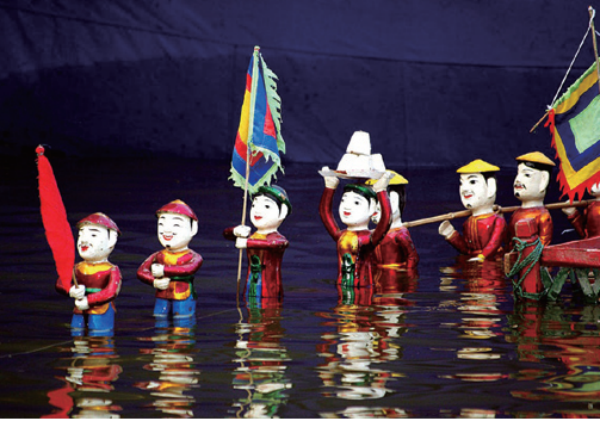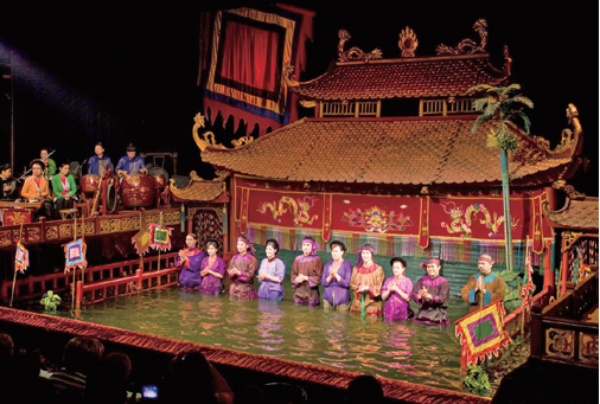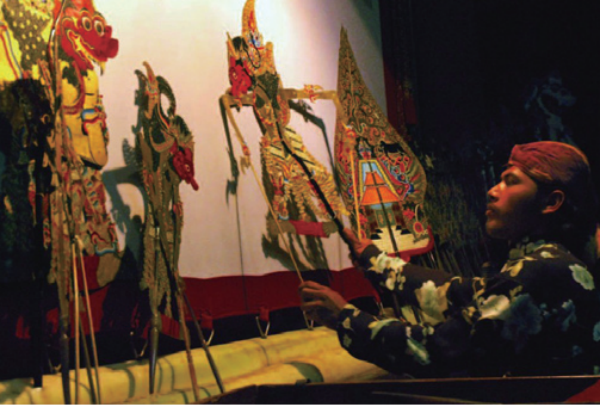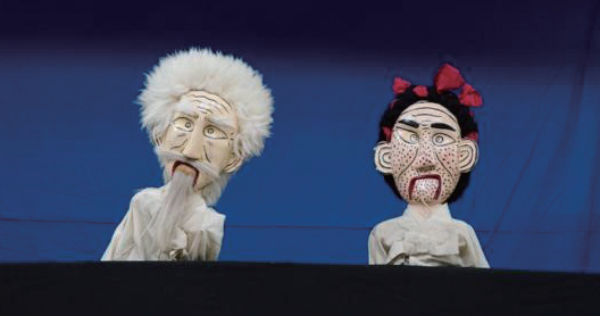Kingos may have been watching movies, musicals or plays during the summer vacation, but probably not many Kingos have gone watching puppet plays is probably not familiar to college students because many students might regard puppet plays as a children’s domain. Regarding puppet plays as a children’s domain, however, is a misunderstanding. There are many puppet plays with unique features, different traditions, and various cultural backgrounds. Therefore, the Sungkyun Times (SKT) now briefly introduces various traditional puppet plays. In specific, puppet plays can be divided into three categories: puppet plays using sticks or fingers, shadow puppetry, and puppet plays with string.
Water Puppetry of Vietnam
To start with, water puppetry called Múa Rối Nước in Vietnam is one of the representative puppet plays using sticks or fingers, which is famous for its unique features. In Vietnamese, Múa Rối Nước means puppets dancing in water. Matching the name, the puppetry is performed in waist-deep water. During the Múa Rối Nước, the bottom parts of the puppets are in water, while the upper body parts are above water. Therefore, the puppets float on the water during the whole performance. Not only the puppets but also the people manipulating the puppets float on the water. Múa Rối Nước is the only known form of water puppetry in the world. In addition, the puppets dance in accordance with Vietnamese traditional folk music. Usually, the music is played with traditional instruments like cymbals, horns, gongs, and bamboo flutes.


Shadow Puppetry of Indonesia
Secondly, Wayang Kulit is an Indonesian traditional puppet play using lights and shadows. Wayang means shadow and Kulit means leather. Thus, Wayang Kulit is a form of shadow puppetry that manipuate, behind a white screen, puppets made up of cow leather. Wayang Kulit was designated as one of the Masterpieces of the Oral and Intangible Heritage of Humanity by United Nations Educational, Scientific and Cultural Organization (UNESCO) in November, 2008.
Even though the audience only watches black shadows during the performance, various colors are painted on the leather puppets for religious reasons. The back side of the screen is regarded as the world after death, while the front side is considered as this world; therefore the play is designed to suggest that people living in this world cannot see the beautiful colors of the afterlife. In addition, as Indonesians believe that Wayang puppets contain ancestors’ spirits, they perform puppetry only for special events like marriage.


Traditional Puppetry of South Korea

Finally, traditional puppetry of South Korea manipulates puppets by connecting the puppets with thin thread. The traditional puppetry, also known as Ggokdugaksi-nolyi, was designated as an important intangible cultural asset in December, 1964, because it is the only traditional puppetry in Korea that has ever been passed down to modern society.
The traditional puppetry consists of eight independent stories. From the feudal age to the time of enlightenment, traditional puppetry has been played by a wandering artists group named Namsadangpae. Moreover, the manipulators of the puppets hide behind the screen and show puppets above the screen. The musicians of the traditional puppetry usually play Jang-gu and gongs, the traditional instruments of Korea, during the performance.
There are various unique puppet plays all over the world other than these three puppet plays. From October 11 to 15, Chuncheon Puppet Theatre will also be held. Therefore, for those who want to see the various puppets and watch lots of unique plays from various countries in person, visiting the theatre will be a great opportunity for a new experience.
